Thank you for getting social about animal agriculture! Share any of the following graphics to your social media pages!

Farmers and ranchers work to use antibiotics judiciously and implement preventative measures to keep zoonotic diseases from spreading between animals and people. bit.ly/3TXjRPl
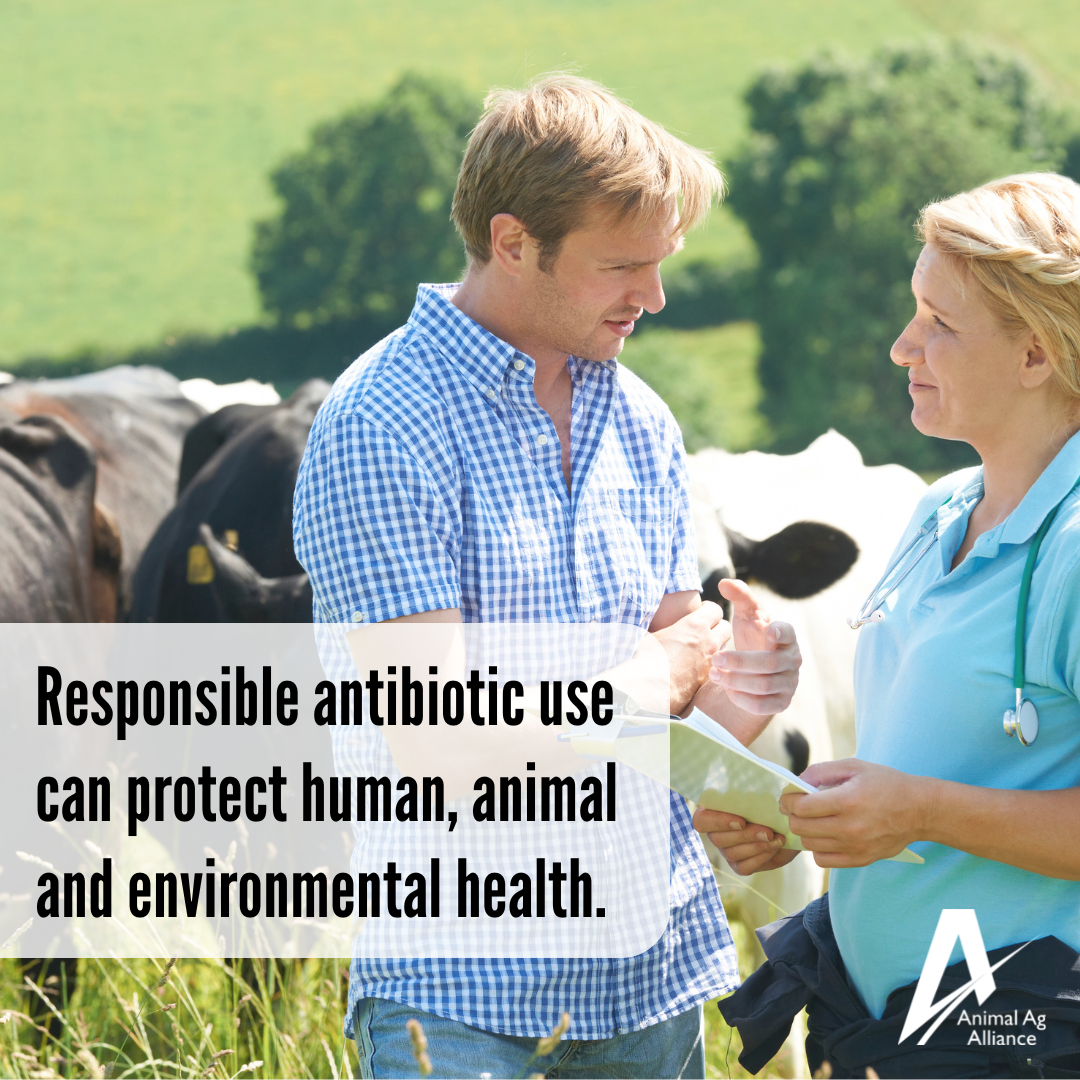
Farmers, ranchers, and veterinarians take a “One Health” approach in protecting human, animal, and environmental health. bit.ly/33q7vpG
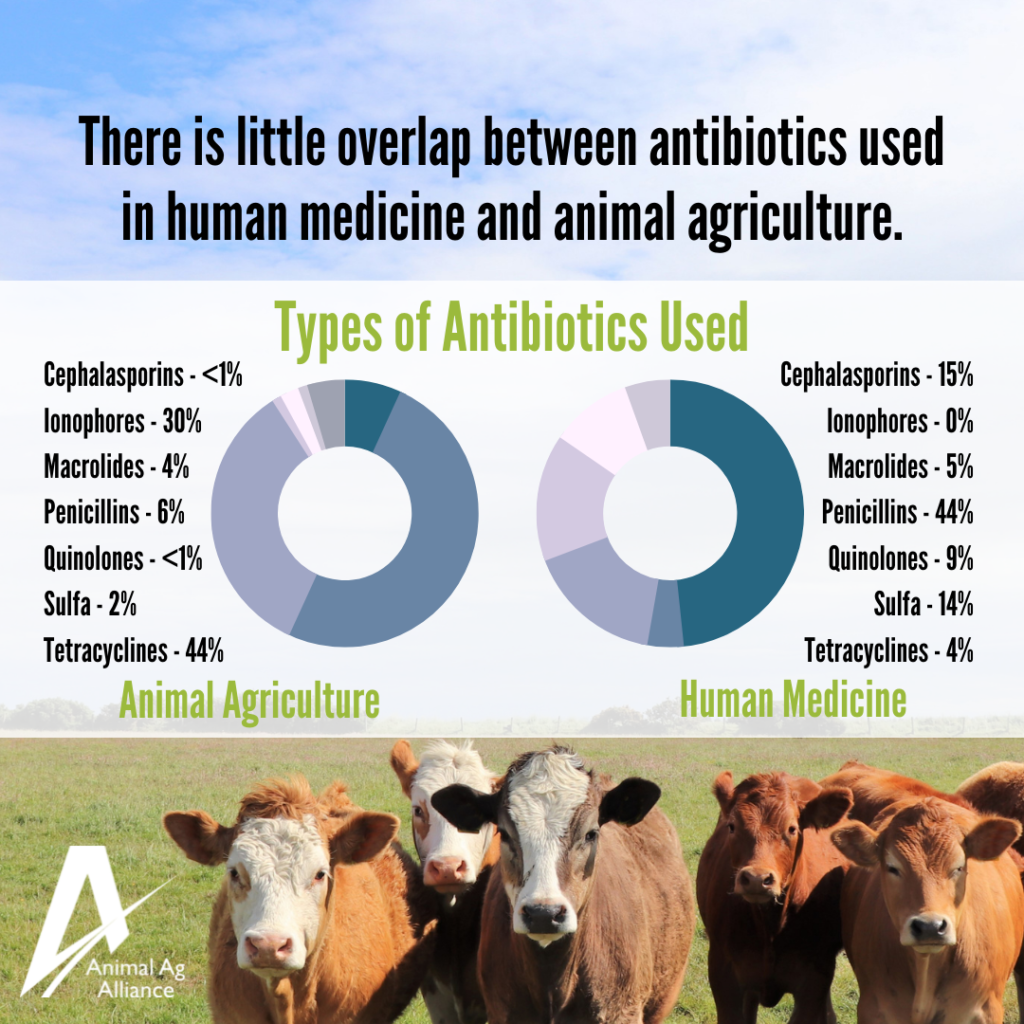
Little crossover occurs between the types of antibiotics used in animal agriculture and the field of human medicine. bit.ly/39oANtJ

Just like in human medicine, medically important antibiotics are used in animal agriculture to treat, control, and prevent disease. bit.ly/39oANtJ
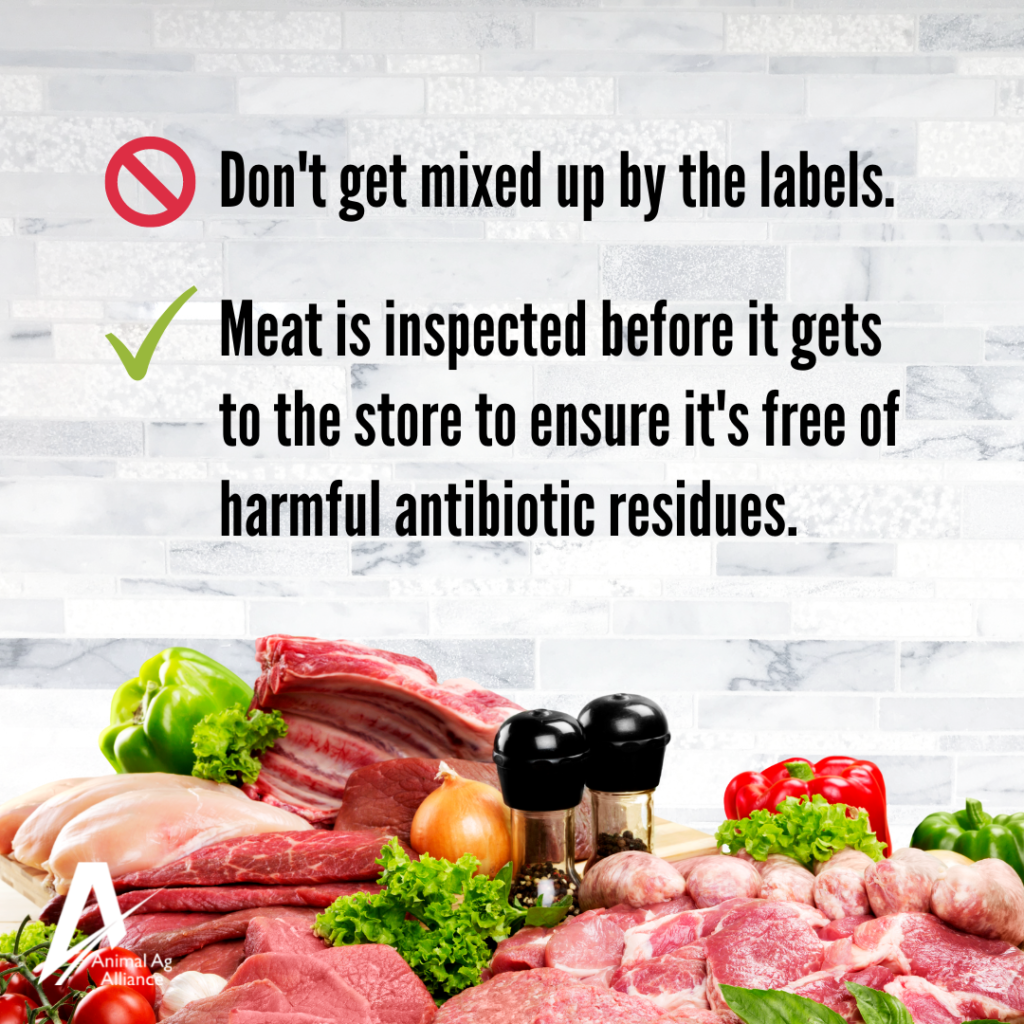
Don’t get mixed up by confusing food labels. https://bit.ly/3OtEwbA

When animals get sick, a veterinarian may need to prescribe an antibiotic for the animal to feel better and for its overall well-being. bit.ly/39oANtJ
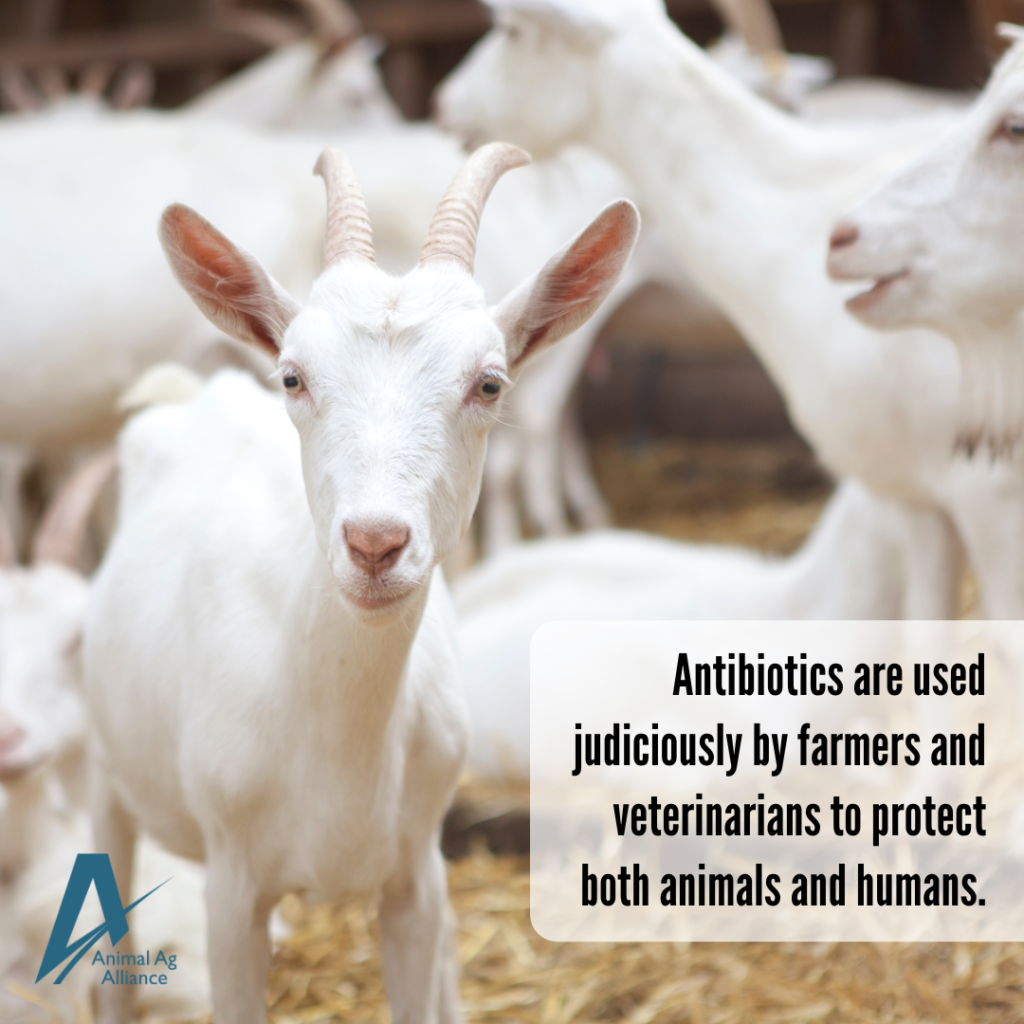
Through responsible antibiotic use, farmers, ranchers, and practicing veterinarians work together to maintain animal health and well-being! bit.ly/39oANtJ
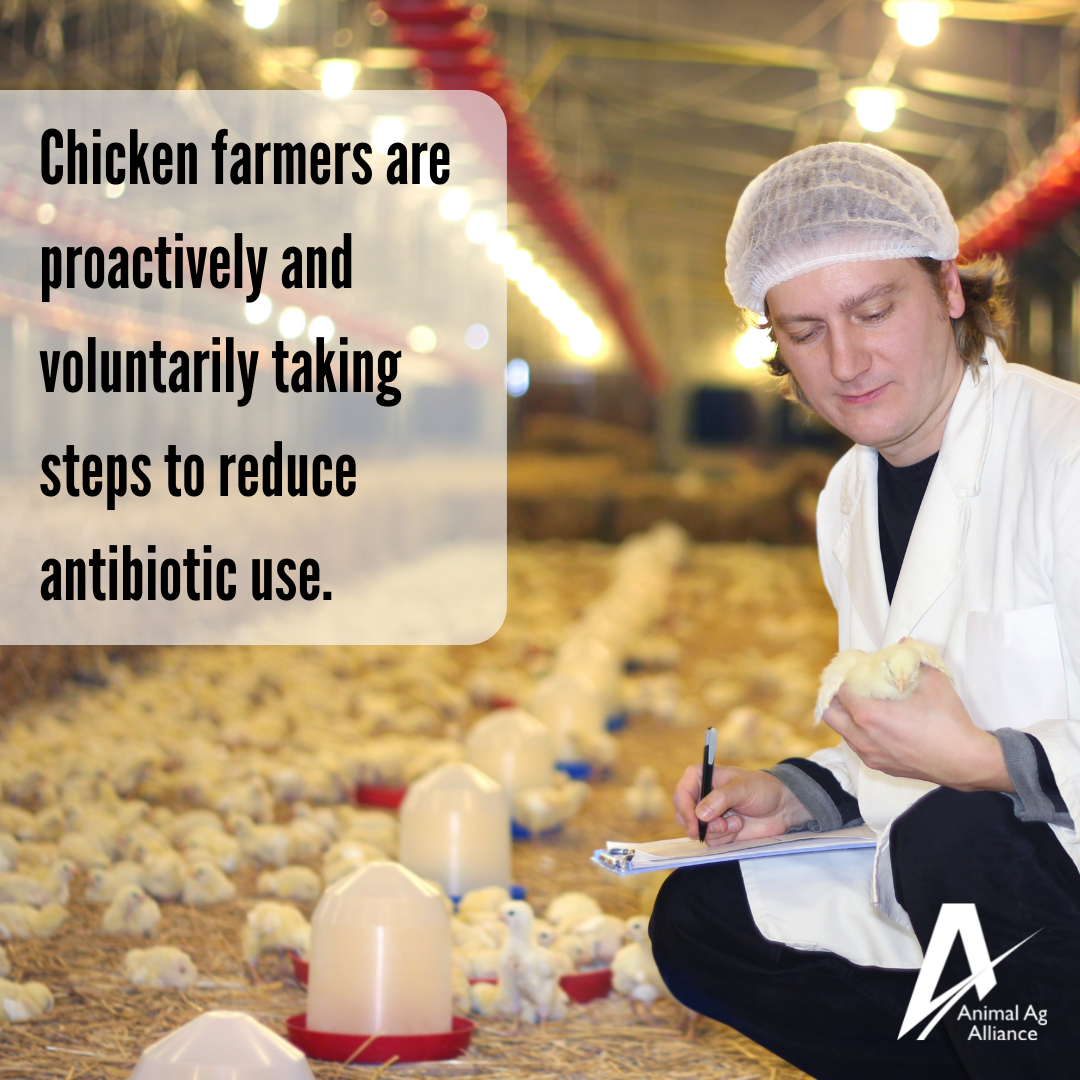
Chicken farmers are leaders in finding innovative solutions to ensure the health of their flocks while reducing antibiotic use. https://bit.ly/3ssuXQM
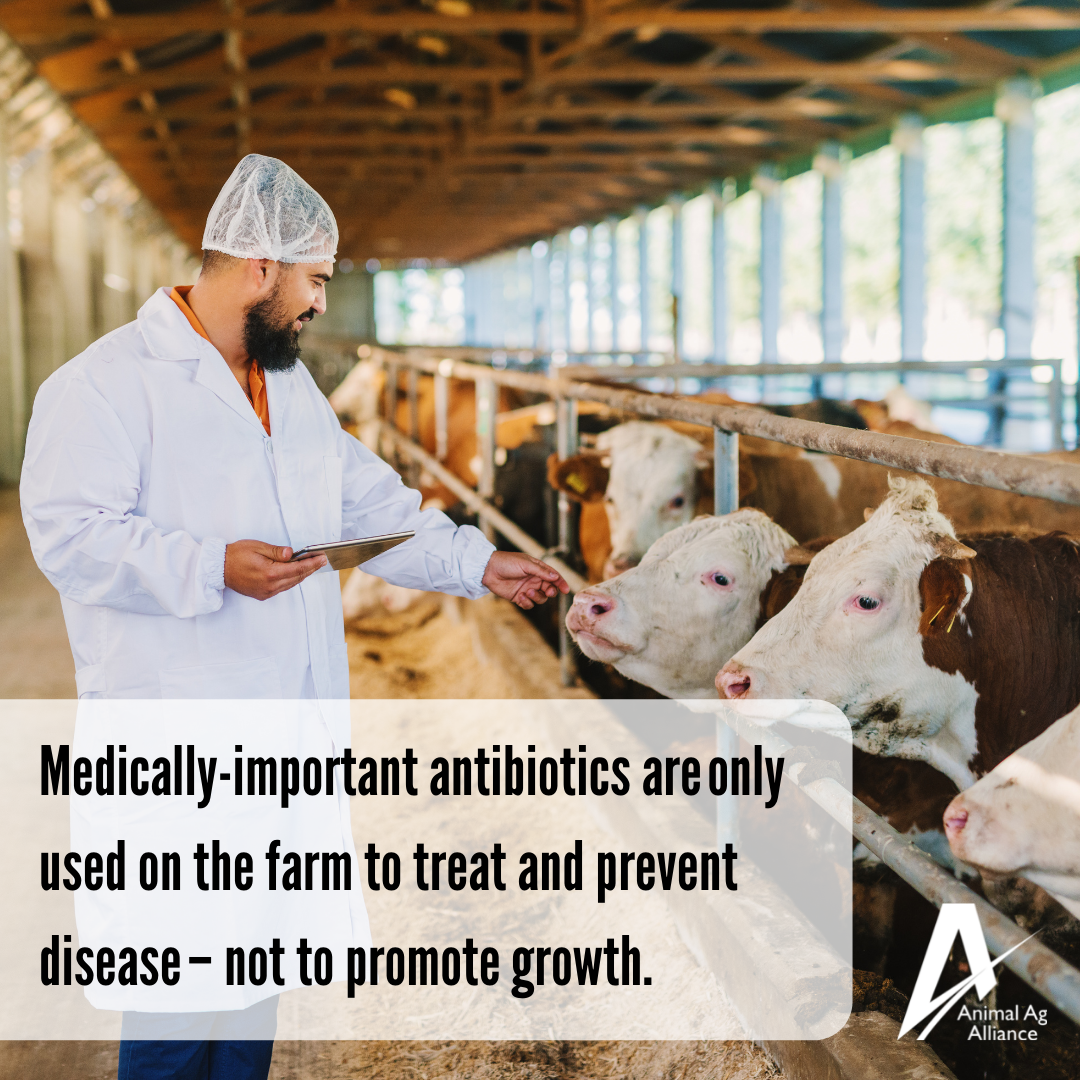
Did you know growth promotion uses of medically important antibiotics are prohibited? These products are only used to treat, prevent and control disease under strict oversight from a veterinarian. https://bit.ly/3LzUOiu
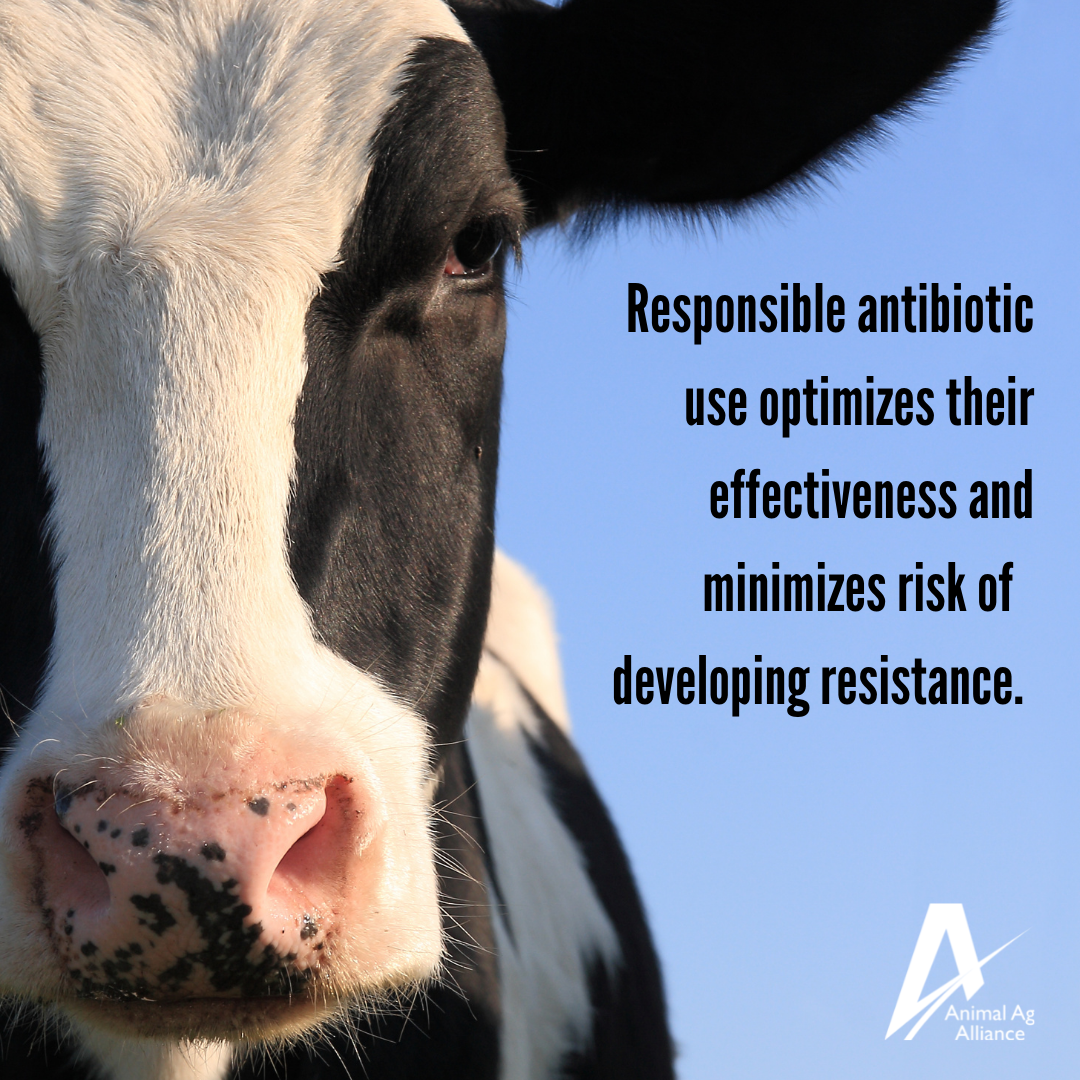
Responsible antibiotic use involves evaluating its application to protect animal health, optimize its effectiveness and minimize the risk of developing resistance to protect public health. https://bit.ly/3GI8i8a
Antibiotics are just one tool in a farmer’s animal health toolbox! They sit in the toolbox alongside veterinary guidance, proper nutrition, clean water, air ventilation, temperature management, animal housing maintenance, vaccines, and genetics. https://bit.ly/3GI8i8a
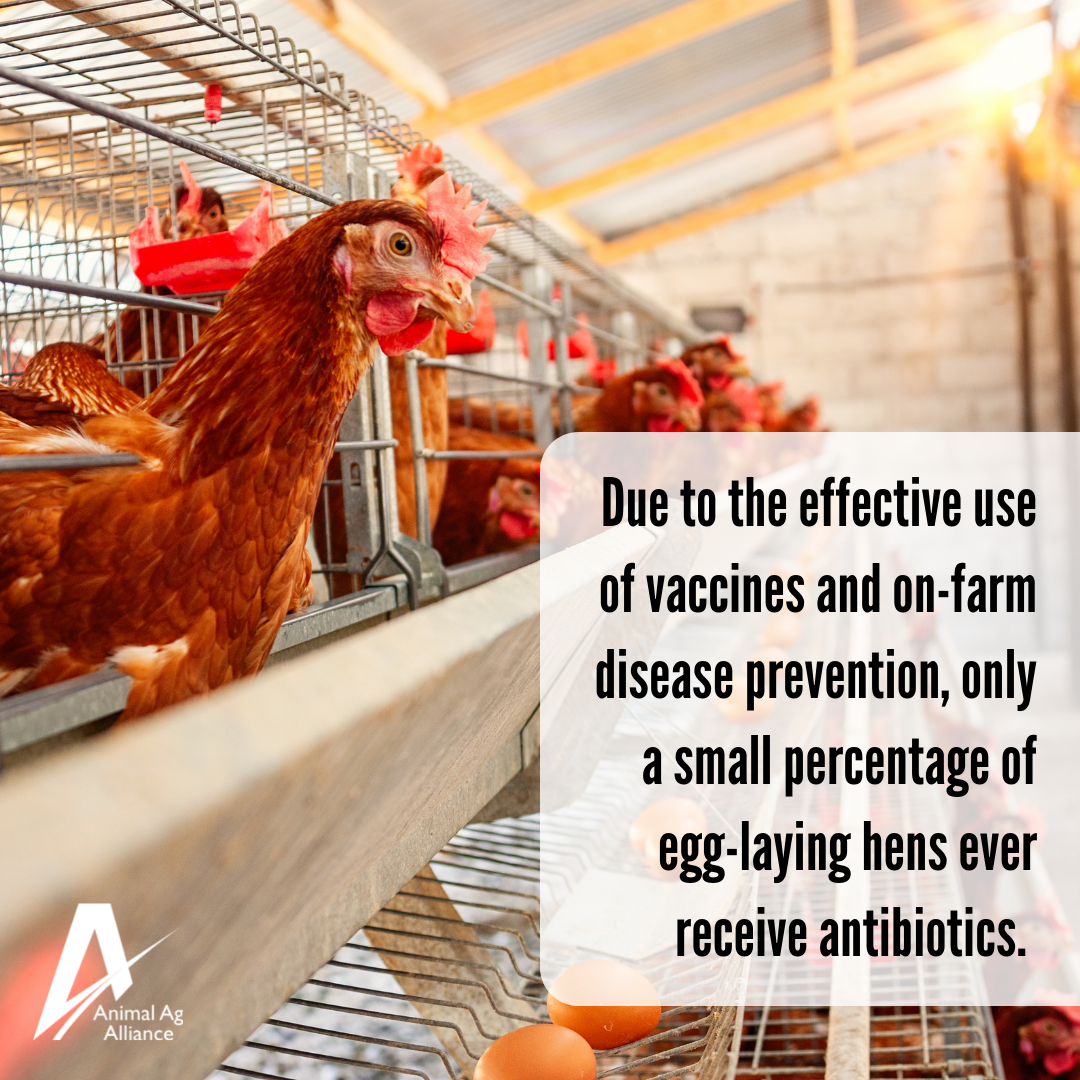
Egg farmers are committed to keeping their hens healthy and free from disease. If antibiotics are given, it is under the supervision of a veterinarian and only as necessary. https://bit.ly/3B5e82h

At times pigs may need antibiotics to treat illness. Responsible antibiotic use means using only what’s necessary for pig health. This sensible approach protects animal wellbeing, food safety, and the environment. https://bit.ly/3uQnRsf

Just like you, animals get sick too. Just like certain sicknesses you may face, sometimes medication is needed to get over the sickness. bit.ly/39oANtJ

Animal medicine goes through three layers of approval to determine if the medicine is safe for the animal, the environment, and human consumption. bit.ly/2V4OTXs

Milk is tested multiple times for antibiotic residues before ever leaving the farm and again before unloading at the processing plant to ensure food and consumer safety. bit.ly/3rw8vDB

DYK: The USDA randomly tests and monitors all meat products before it gets to your plate to ensure it’s safe to eat. bit.ly/2V4OTXs
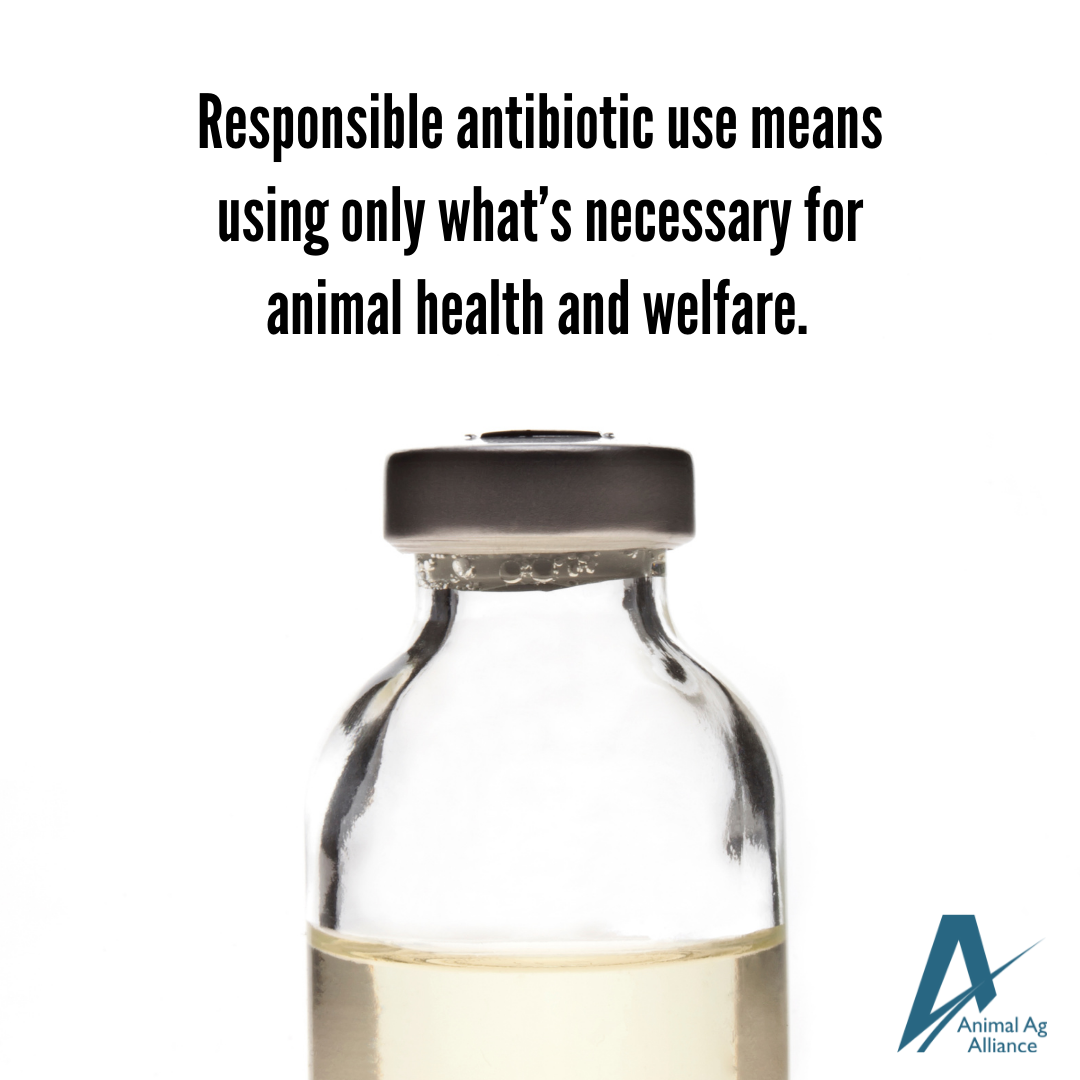
Farmers and ranchers work with veterinarians to minimize disease risks and the need for antibiotic use. https://bit.ly/3R76BYF

Herd health plans include vaccination protocols, mitigating antibiotic needs, and reducing disease risks. https://bit.ly/2V4OTXs

Veterinarians work to make a plan to prevent disease and determine when to administer medications, like antibiotics, if a chicken gets sick. https://bit.ly/349YpNO
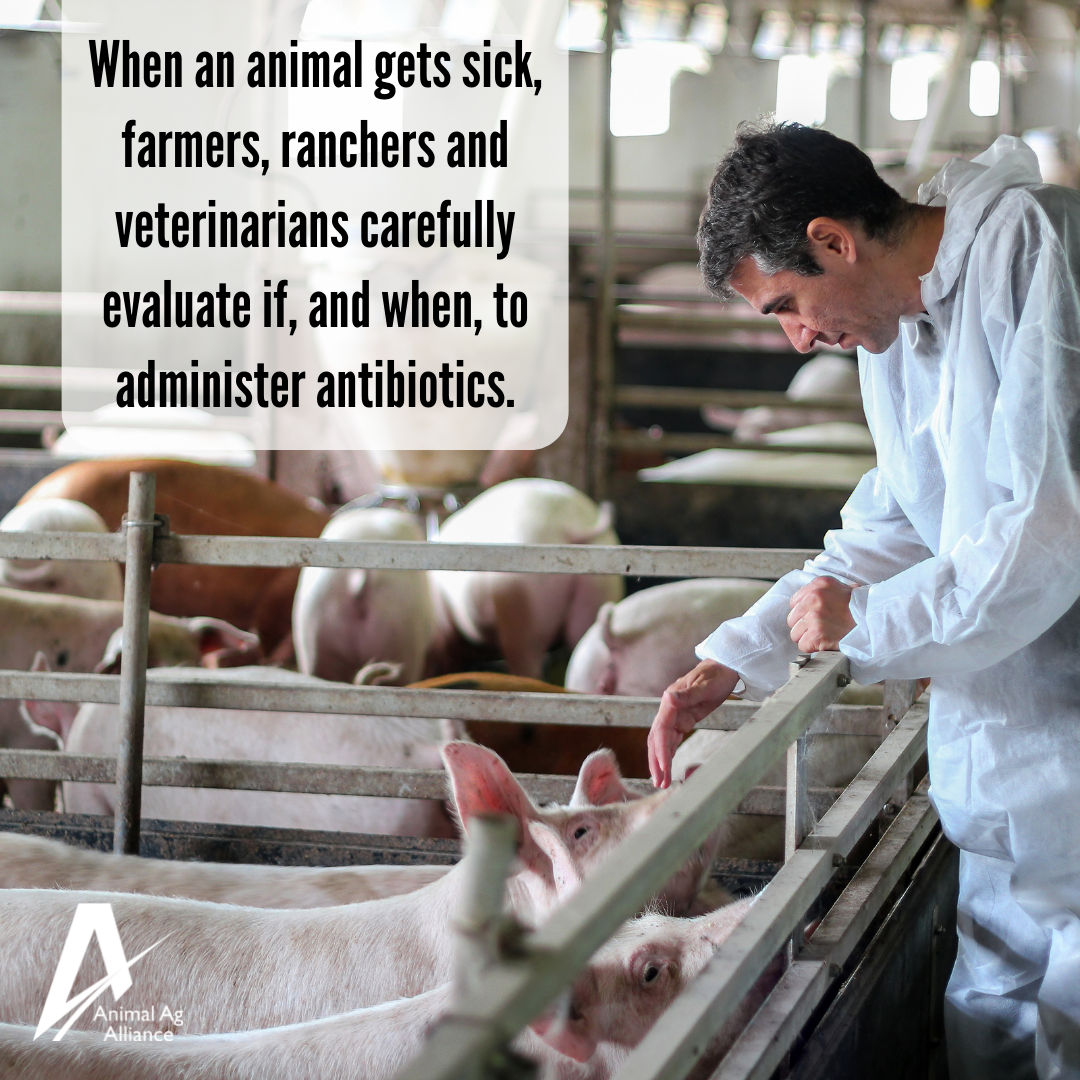
Veterinarians work with farmers and ranchers to treat animals if they get sick, just like a doctor would with you. bit.ly/3sAZgU3

It’s important to cook all meat to the recommended temperatures to kill bacteria and keep your family safe. bit.ly/3muuKYW

Advancements in genetics, veterinary management, and animal disease research have led to improved animal health and less reliance on antibiotics. bit.ly/3sAZgU3
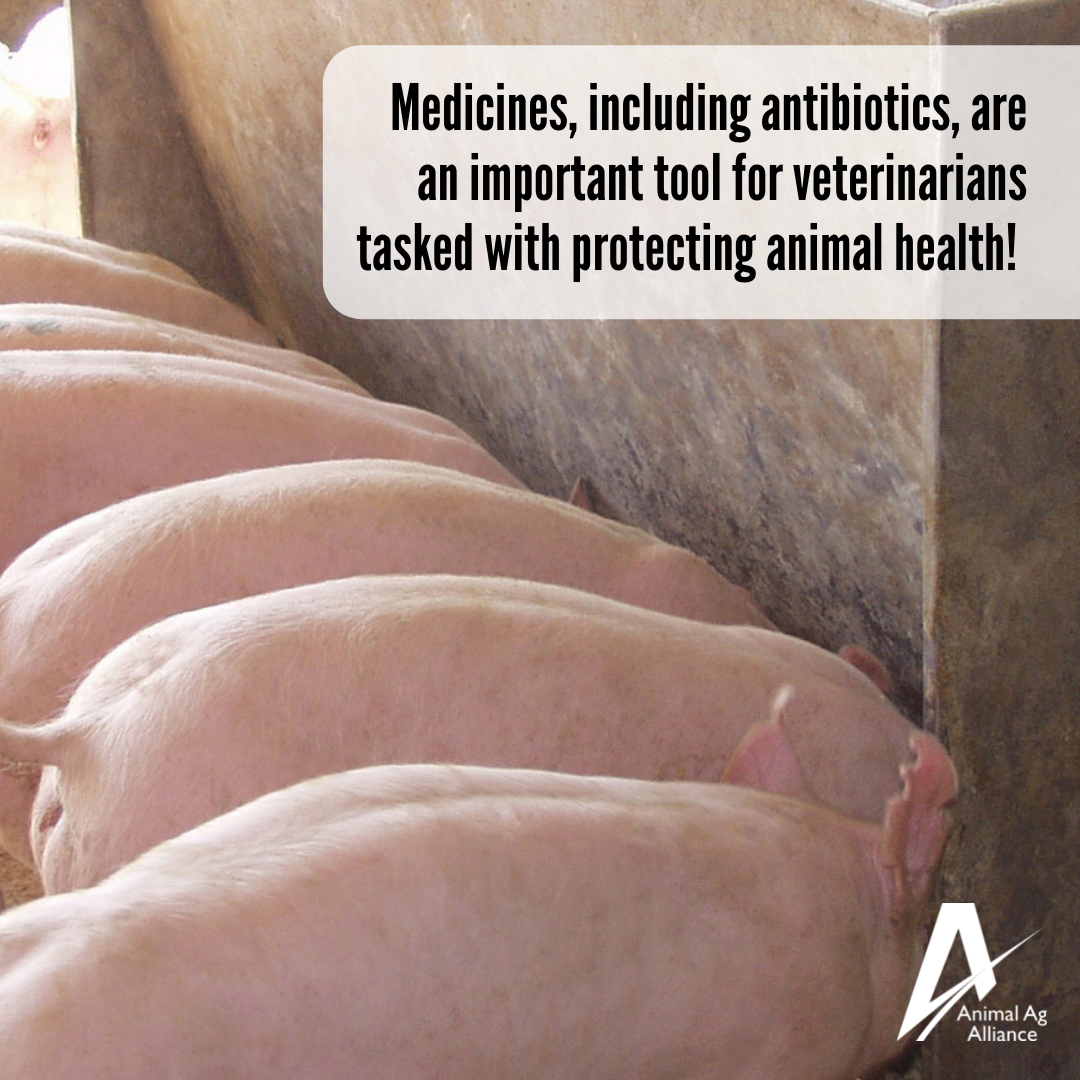
Antibiotics are an important tool for veterinarians tasked with protecting animal health and preventing suffering from disease, which can lead to poor animal welfare. https://bit.ly/3kEI778
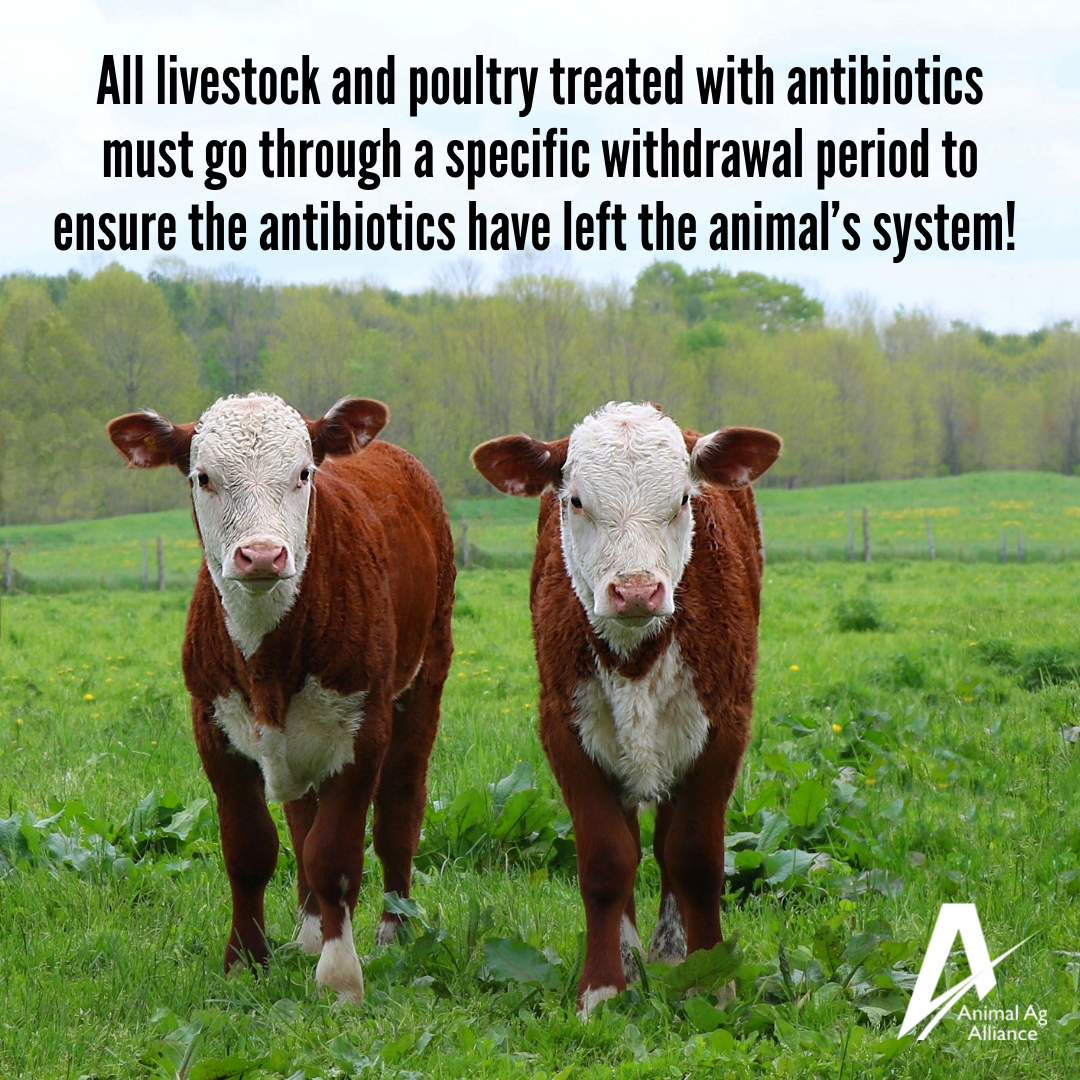
If livestock or poultry are treated with antibiotics, they must go through a specific withdrawal period (determined by the antibiotic prescribed) to ensure enough time has passed for the antibiotic to leave the animal’s system before being processed to ensure your meat and milk are free of antibiotic residues! https://bit.ly/2V4OTXs
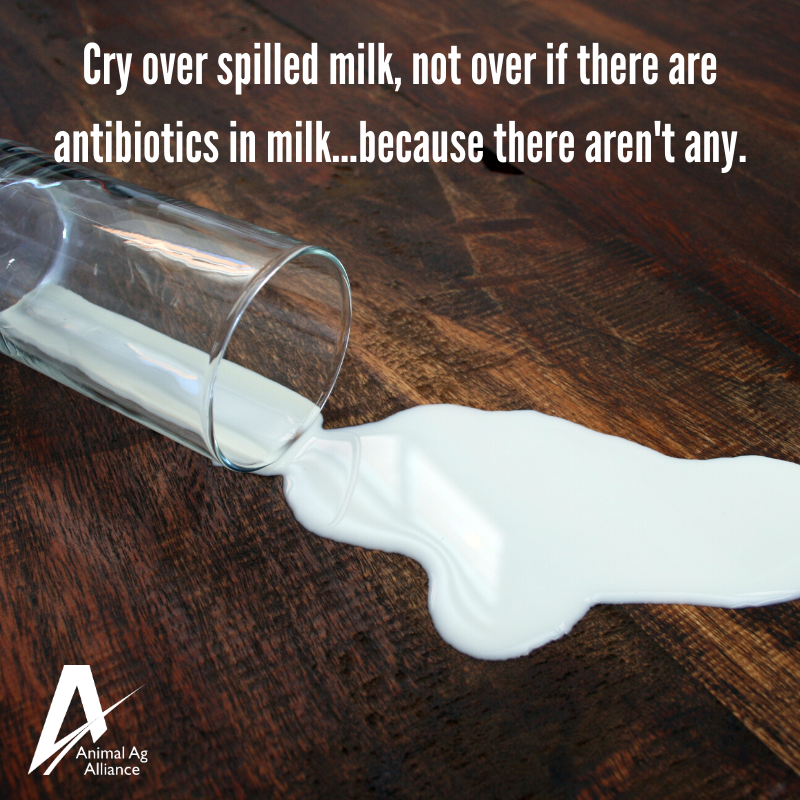
Raise your hand if you’ve ever taken an antibiotic and felt so much better afterward. Well, sometimes cows need an antibiotic to get over an illness. While the cow is on the antibiotic, their milk is not mixed in with the milk from the rest of the herd. Farmers also wait a specific time period (called a withdrawal period) before that cow can be milked again with the rest of the herd. Every time a truck comes to pick milk up from a farm, the milk is tested for antibiotic residue. If it tests positive, the entire tanker of milk is discarded and that farmer is responsible for reimbursing the entire load. So you see, there are strict measures in place to prevent antibiotics in milk! https://bit.ly/3kQcs8Q
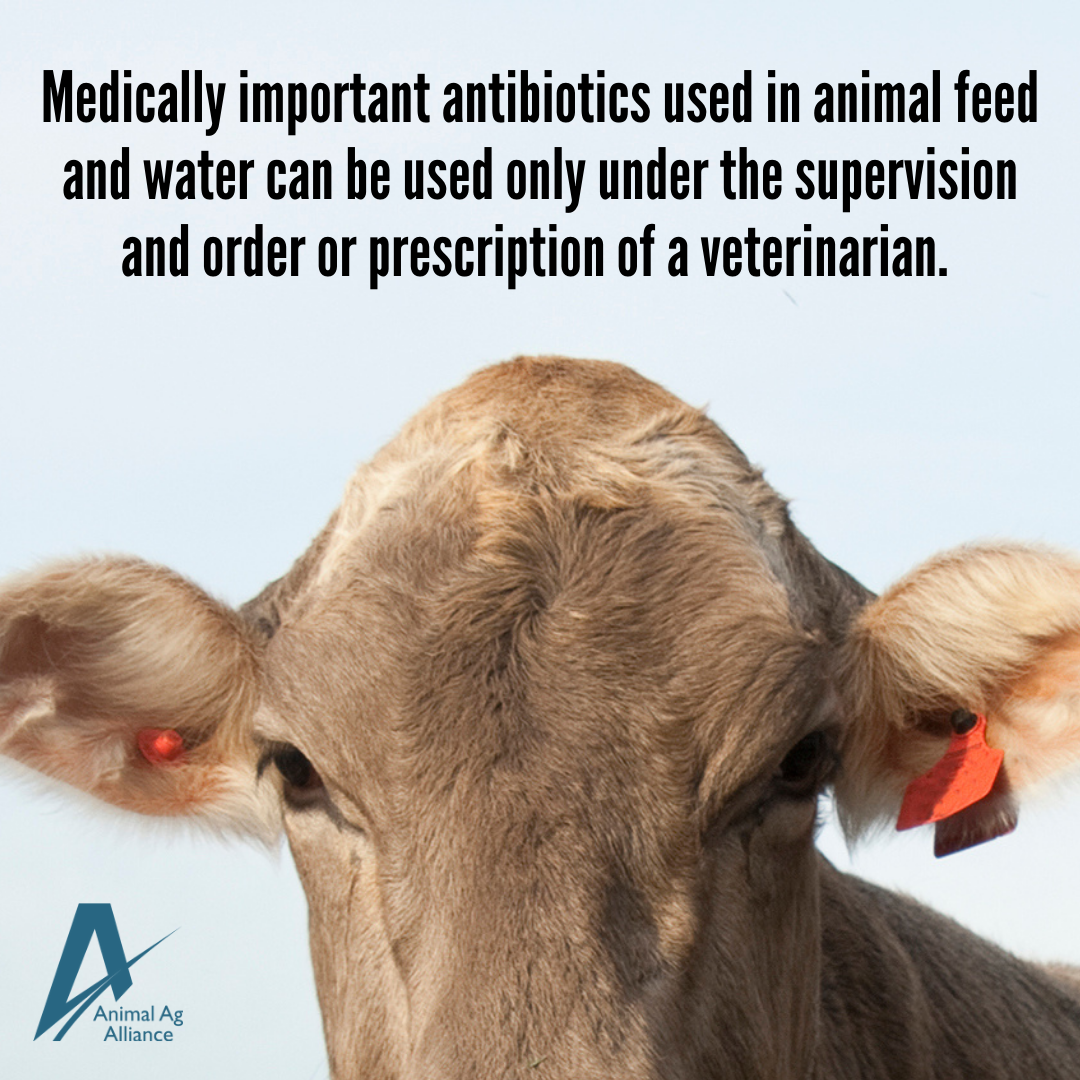
DYK: Under the new FDA policy on judicious use of antibiotics, a veterinarian must be involved for medically important antibiotics and growth promotion use has been eliminated. https://bit.ly/3n7l2w3
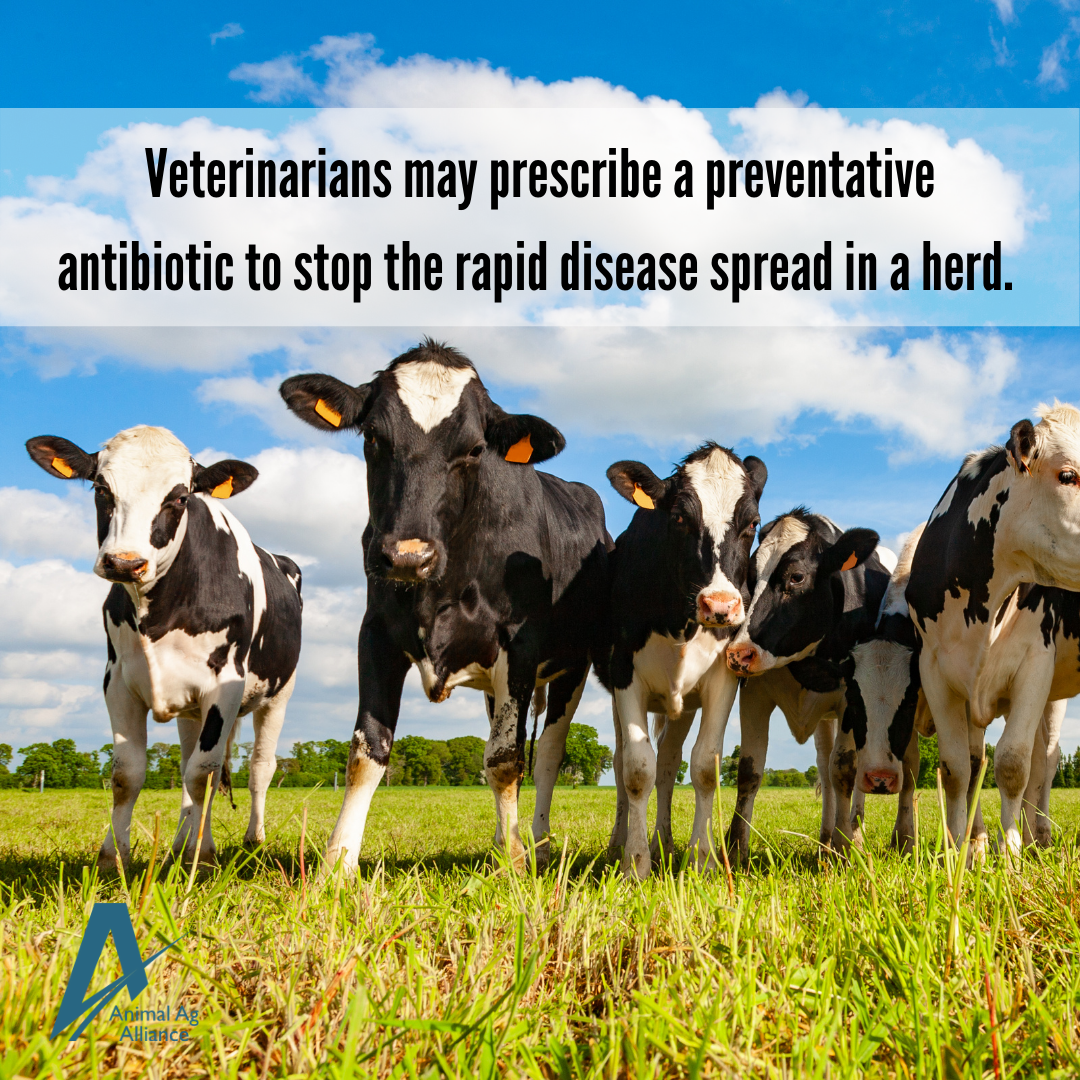
Why would a vet prescribe an antibiotic for an animal that isn’t sick?
Veterinarians and farmers recognize that diseases can spread rapidly, so when one animal shows symptoms of a disease or becomes ill, the surrounding animals may not be sick yet, but are likely to get sick and may die if they aren’t treated. This is known as preventive antibiotic treatment. http://bit.ly/29jbIoj
Category: Social Media
Tag: Antibiotic Use, Social Media,

